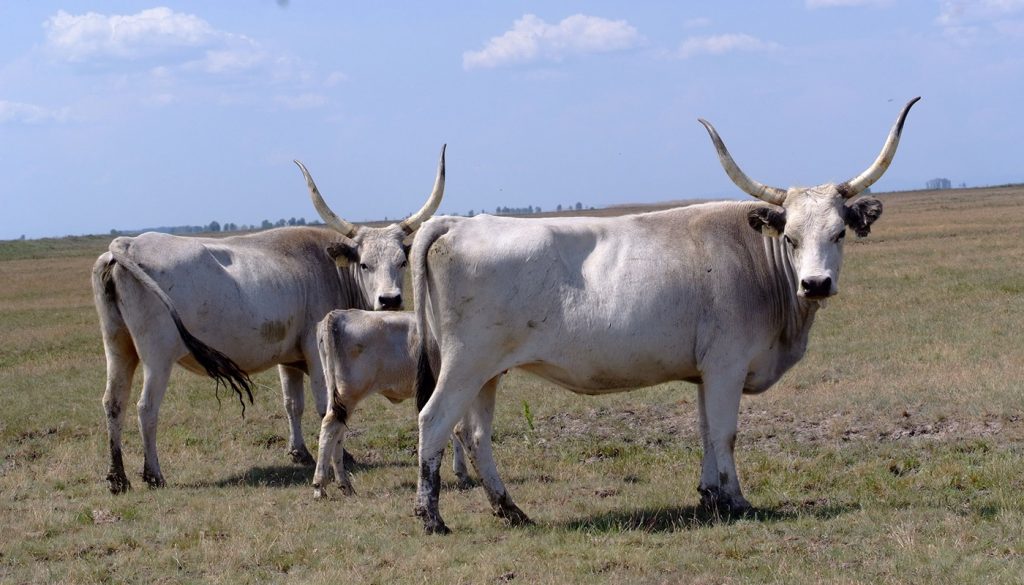
The Hungarian Grey cattle are like the supermodels of the cattle breeds. They are tall, quite slender and very beautiful. Both their skin and coats are shades that vary from a soft silver-white to an ash-grey. They are considered an ancient breed of cattle that are a national symbol of Hungary and as such are protected by law.
HUNGARIAN GREY BREED OF CATTLE QUICK PROFILE OVERVIEW
|
|
|---|---|
| The Hungarian Grey cattle breed are a beautiful graceful breed of cattle that are treasured and protected by Hungarian law as a national treasure | |
| Country of Origin: | Hungary |
| Other Names: | Hungarian Steppe Cattle |
| Main Purpose: | Draft and meat |
| You may Also Like: | 35 Best Cattle Breeds for Milk – Dairy Cattle |
| You may Also Like: | 47 Best Cattle Breeds for Meat – Beef Cattle |
| Can be used for | Breed, Meat, Draft |
| Ideal Climate: | Heat, Cold, Most Climates |
| Conservation Status: |
Not listed by the *ALC Status/Rarity: Their numbers did decline but they are recovering – WWF |
| Health Issues? | No known health issues |
| Good Starter Cattle? | Novice to intermediate Cattle farmer/keeper level |
| Cattle Associations: | Hungarian Grey Cattle Breeders Association |
| Cattle Clubs: | Please refer to the Hungarian Grey Cattle Breeders Association for more information on the Hungarian Grey Cattle breed |
| Where to buy them? | Please refer to the Hungarian Grey Cattle Breeders Association for more information on the Hungarian Grey Cattle breed |
| Child Friendly? | Livestock should not be left unattended around unsupervised children |
| General Information: | The Hungarian Grey cattle breed is an excellent choice of breed for land management projects. The WWF has a herd of 110 grey cattle that actively participate in land management programs along rivers. Their grazing is known to trim floodplain meadows and suppress false indigo. The herd also plays an important part in preserving the breed lineage with contributing sperm for animal husbandry sperm banks. The Hungarian Grey cattle belong to a group of cattle known as Podolic cattle. Podolic Cattle are a group of cattle that have upright long horns and grey coats that are thought to have originated in Podolian steppe. |
| Note: *ALC stands for American Livestock Conservancy | |
PHYSICAL CHARACTERISTICS |
||||||||||||||||||||||||||||||||
|---|---|---|---|---|---|---|---|---|---|---|---|---|---|---|---|---|---|---|---|---|---|---|---|---|---|---|---|---|---|---|---|---|
| The Hungarian Grey cattle breed is truly one of the most beautiful breeds of cattle. They have long slender legs and a physique that has more slender lines than most other blockier cattle breeds. They have upright graceful necklines with a very small tight dewlap and a long heart shaped face. | ||||||||||||||||||||||||||||||||
| Size: | Medium | |||||||||||||||||||||||||||||||
|
||||||||||||||||||||||||||||||||
COW BREEDING & MILKING INFORMATION |
|
|---|---|
| Most Cattle produce milk but not all of them are used in the dairy Cattle capacity for their milk. Cows only calve once a year and should have 12 to 14-month inter-calving cycle. They are fertile and make excellent protective mothers with great maternal instincts. They produce a good quality of milk but not great yields of milk. They are not bred as dairy cattle. | |
| Breeding Period/cycle: | Usually lasts 6 to 24 hours Most ave. 12 to 16 hours Cows usually come on heat every 21 days. |
| Estrous cycle: | Ave. 17 days to 24 days Heifer – usually ave. 20 days Cows – usually ave. 21 days |
| Gestation Period: | Usually, around 279 to 287 days but most gestation is 283 days. Cows that are carrying bull calf’s their gestation period is usually a little longer than cows that are carrying heifer calves. |
| No. Calves/Litter: | 1 calf at a time. Cows rarely have twins or triplets, but it can happen |
| Lactation Period: | Cows lactation period can last for up to about 10 months (305) days. |
| Milking From: | 1 to 6 weeks after Calving |
| Drying off Period: | The cow should have a 12 to 14-month inter-calving cycle. Drying off period for around 60 days before she can calve again. |
| Milk Quality: | Good |
| Milk Ideal for: | Calves |
| You may Also Like: | 35 Best Cattle Breeds for Milk – Dairy Cattle |
CATTLE MEAT PRODUCTION INFORMATION |
||||||||
|---|---|---|---|---|---|---|---|---|
| Most Cattle breeds can be used for meat and produce an acceptable quality of meat. They used to be well used for the lean tender meat and early maturing qualities in the 1800s. Today they are a national protected treasure and are mainly found in parks as tourist attractions or used in land management programs. | ||||||||
| Meat Production? | No, Quality: Good | |||||||
|
||||||||
| You may Also Like: | 47 Best Cattle Breeds for Meat – Beef Cattle | |||||||
CATTLE SKIN PRODUCTION INFORMATION |
||||||||
|---|---|---|---|---|---|---|---|---|
| Most meat Cattle will have a skin by-product, and these are usually used in some form or just as a hide. They are not bred for their skin although when they were being used as a meat breed their beautiful hides were made into various rugs, skins, etc. | ||||||||
| Skin Production? | No, Quality: Good | |||||||
| Skin is used to Produce: | Calf/cow skin leather products such as shoes, car seats, fine leather coats, gloves, handbags, belts, furniture, rugs, etc. | |||||||
|
||||||||
HISTORY
The Hungarian Grey Cattle breed is believed to have been in Hungary since around the 9th century.
The breed was mostly used as a draft animal up until the late 1800s when the breed was used as a beef cattle breed.
The calves were early maturing and had a good high quality of meat it was not an unusual sight back then to see the cattle being herded to the markets of Europe for sale.
With the rise of better and more commercial cattle breed the Hungarian Grey breed could not really compete. With a result their numbers started to dwindle hitting their lowest around the 1960s fortunately since then their numbers have increased to a more comfortable level.
Today they are mainly found in Nationals parks kept as tourist attractions and for the use in land management projects.
Video
USEFUL LINKS
- Purebred Dairy Cattle Association
- American Dairy Association
- National Association of Animal Breeders
- American Dairy Science Association
- United States Cattlemen’s Association
- National Cattlemen’s Beef Association
- American National Cattlewomen
- Beef Cattle Breed Associations
- National Cattlemen’s Beef Association
- Fur Commission USA
- North American Meat Institute
- American Livestock Conservancy
- Animal Shelter (ASPCA)
- American Veterinary Medical Association
- American Animal Welfare Society
- American Animal Control
- American Society of Animal Science
- United States Department of Agriculture
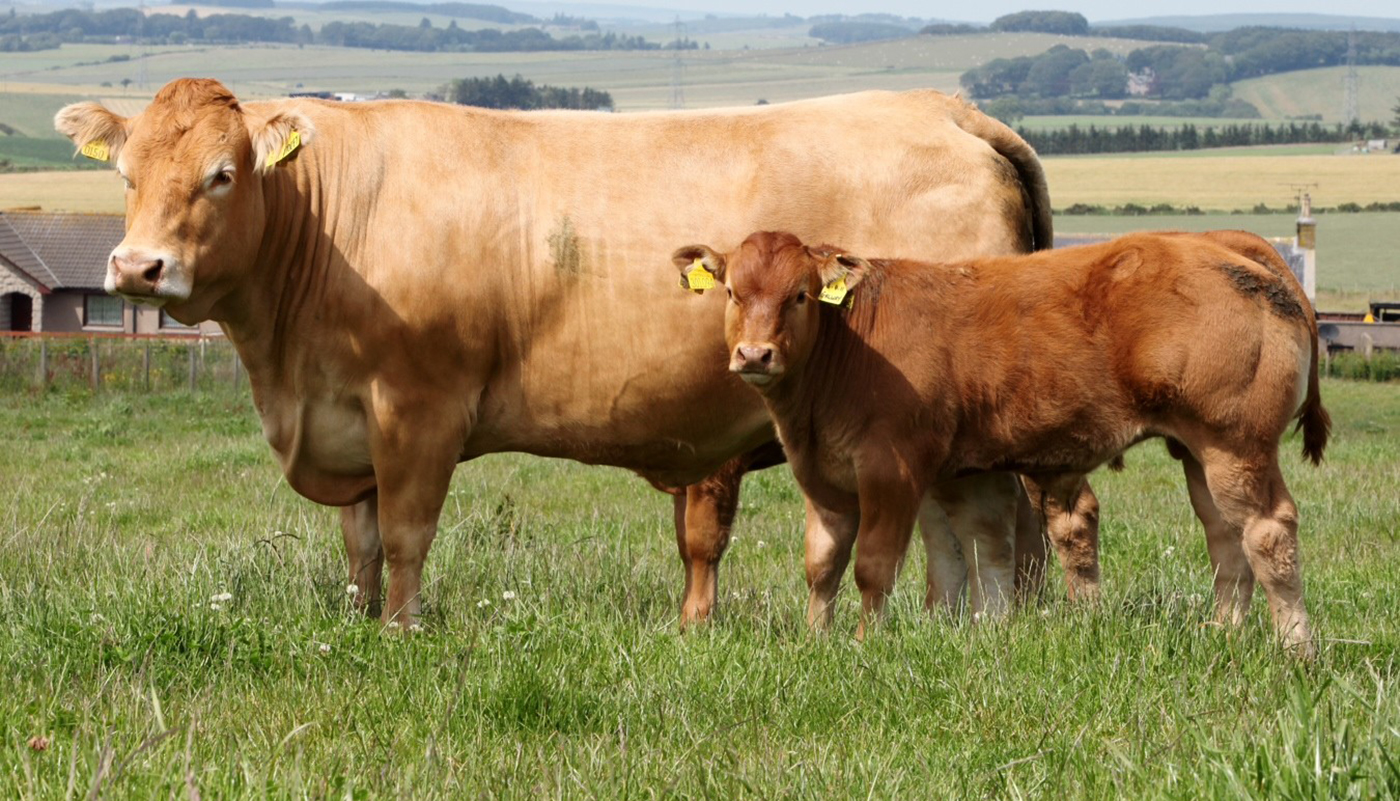 Limousin Cattle Breed – Everything You Need to Know
Limousin Cattle Breed – Everything You Need to Know Normande Cattle Breed – Everything You Need to Know
Normande Cattle Breed – Everything You Need to Know Murray Grey Cattle Breed – Everything You Need to Know
Murray Grey Cattle Breed – Everything You Need to Know Florida Cracker Cattle Breed – Everything You Need to Know
Florida Cracker Cattle Breed – Everything You Need to Know Australian Lowline Cattle Breed – Everything You Need to Know
Australian Lowline Cattle Breed – Everything You Need to Know Holstein Cattle Breed – Everything You Need to Know
Holstein Cattle Breed – Everything You Need to Know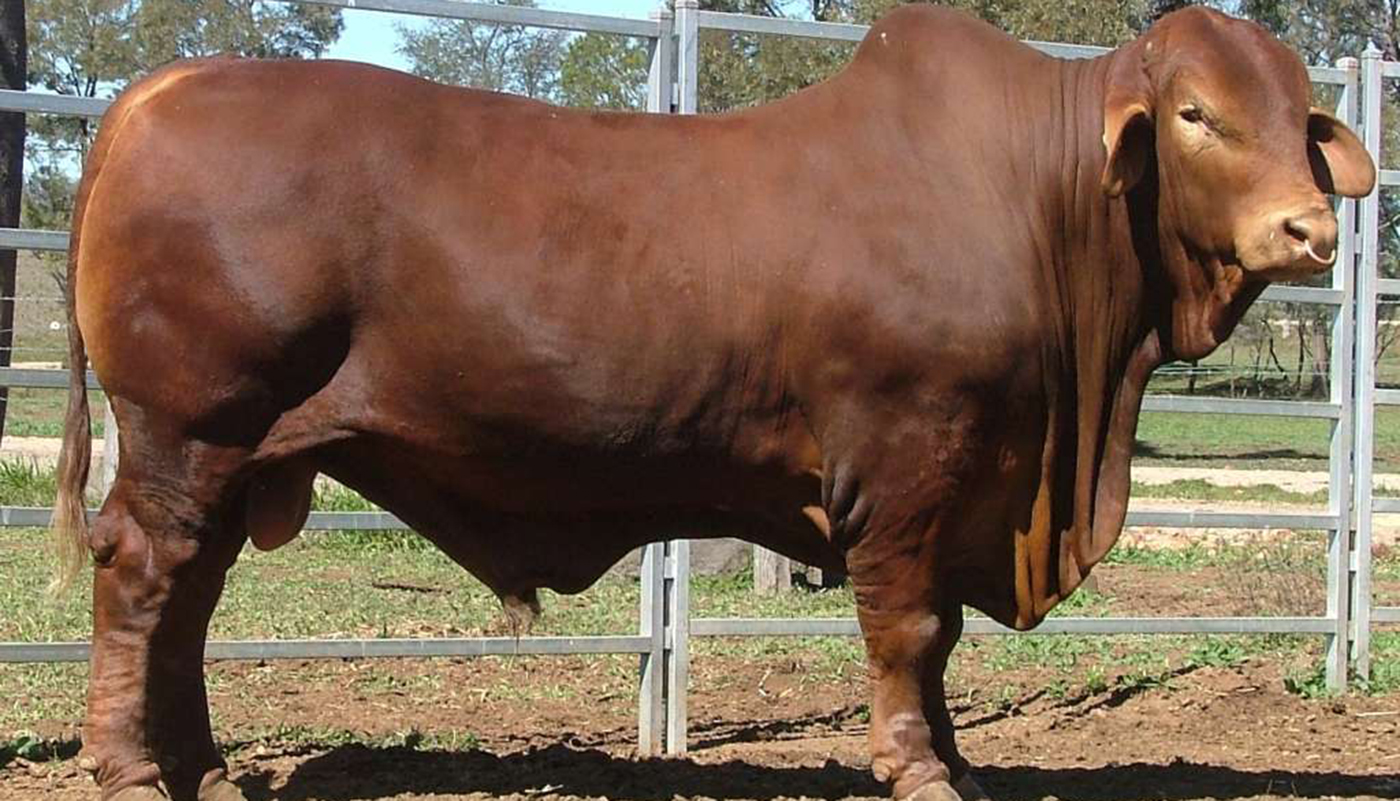 Droughtmaster Cattle Breed – Everything You Need to Know
Droughtmaster Cattle Breed – Everything You Need to Know Nelore Cattle Breed – Everything You Need to Know
Nelore Cattle Breed – Everything You Need to Know Ankole-Watusi Cattle Breed – Everything You Need to Know
Ankole-Watusi Cattle Breed – Everything You Need to Know Sahiwal Cattle Breed – Everything You Need to Know
Sahiwal Cattle Breed – Everything You Need to Know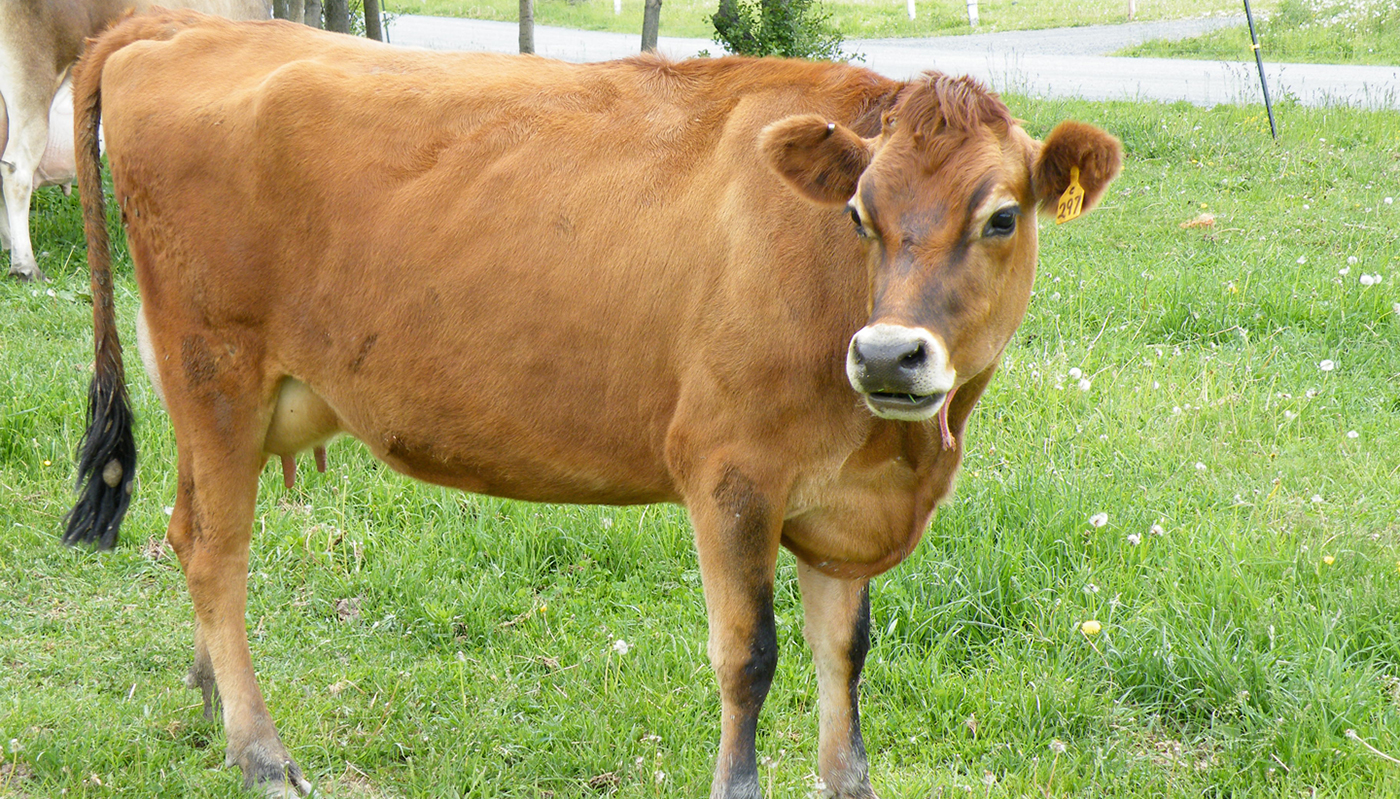 Jersey Cattle Breed – Everything You Need to Know
Jersey Cattle Breed – Everything You Need to Know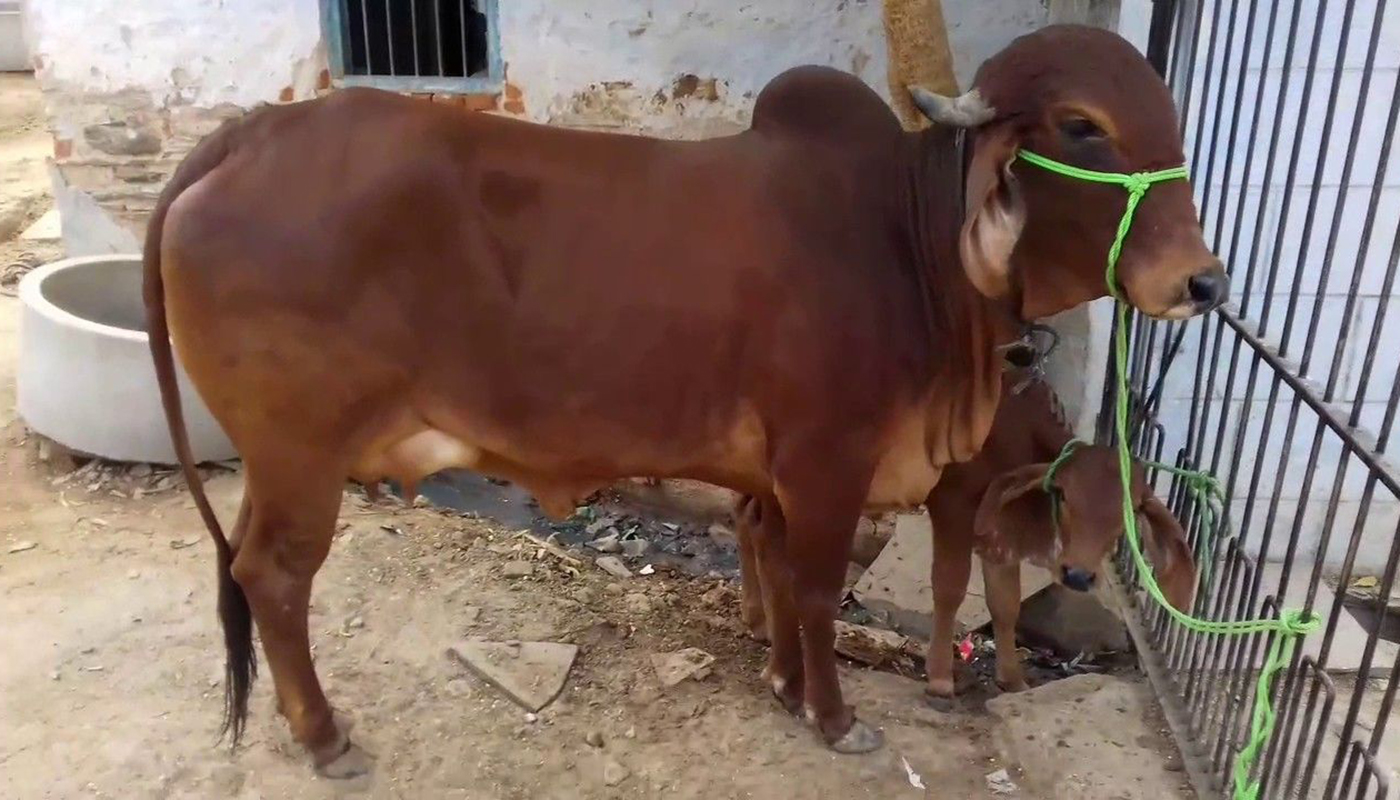 Gir Cattle Breed – Everything You Need to Know
Gir Cattle Breed – Everything You Need to Know